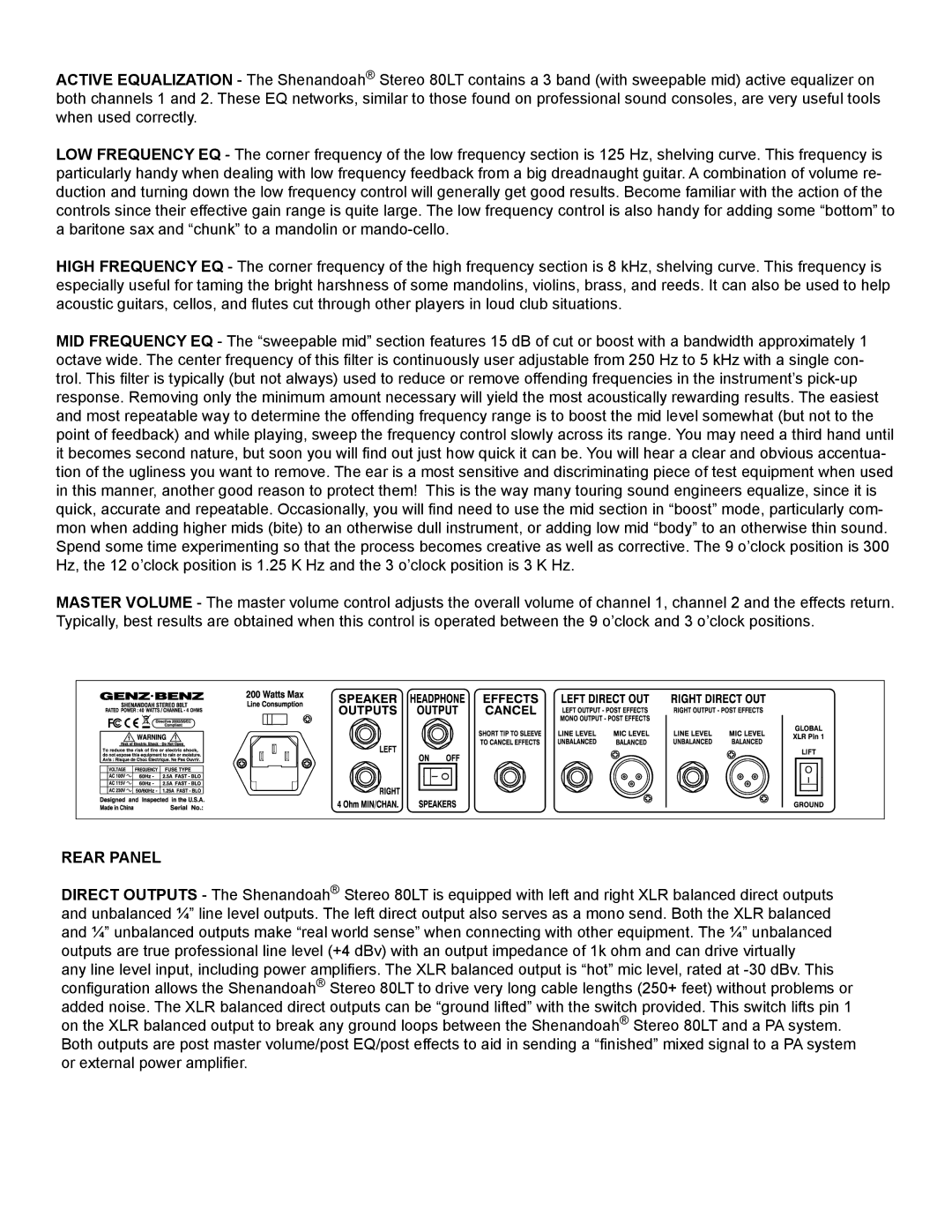
ACTIVE EQUALIZATION - The Shenandoah® Stereo 80LT contains a 3 band (with sweepable mid) active equalizer on both channels 1 and 2. These EQ networks, similar to those found on professional sound consoles, are very useful tools when used correctly.
LOW FREQUENCY EQ - The corner frequency of the low frequency section is 125 Hz, shelving curve. This frequency is particularly handy when dealing with low frequency feedback from a big dreadnaught guitar. A combination of volume re- duction and turning down the low frequency control will generally get good results. Become familiar with the action of the controls since their effective gain range is quite large. The low frequency control is also handy for adding some “bottom” to a baritone sax and “chunk” to a mandolin or
HIGH FREQUENCY EQ - The corner frequency of the high frequency section is 8 kHz, shelving curve. This frequency is especially useful for taming the bright harshness of some mandolins, violins, brass, and reeds. It can also be used to help acoustic guitars, cellos, and flutes cut through other players in loud club situations.
MID FREQUENCY EQ - The “sweepable mid” section features 15 dB of cut or boost with a bandwidth approximately 1 octave wide. The center frequency of this filter is continuously user adjustable from 250 Hz to 5 kHz with a single con- trol. This filter is typically (but not always) used to reduce or remove offending frequencies in the instrument’s
MASTER VOLUME - The master volume control adjusts the overall volume of channel 1, channel 2 and the effects return. Typically, best results are obtained when this control is operated between the 9 o’clock and 3 o’clock positions.
REAR PANEL
DIRECT OUTPUTS - The Shenandoah® Stereo 80LT is equipped with left and right XLR balanced direct outputs and unbalanced ¼” line level outputs. The left direct output also serves as a mono send. Both the XLR balanced and ¼” unbalanced outputs make “real world sense” when connecting with other equipment. The ¼” unbalanced outputs are true professional line level (+4 dBv) with an output impedance of 1k ohm and can drive virtually any line level input, including power amplifiers. The XLR balanced output is “hot” mic level, rated at
